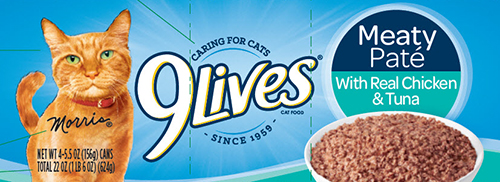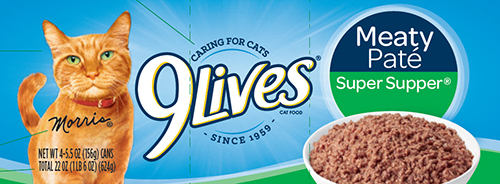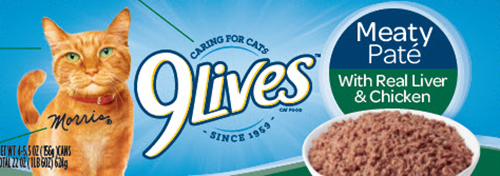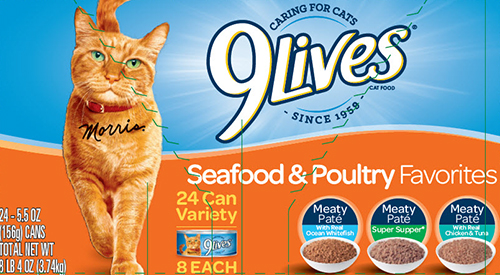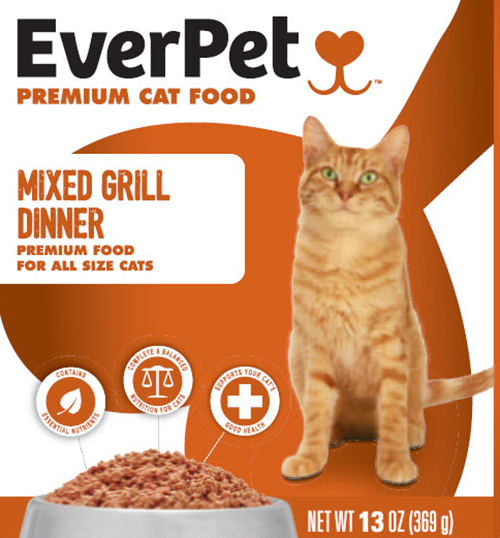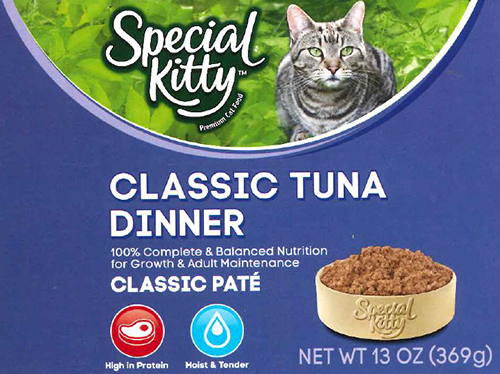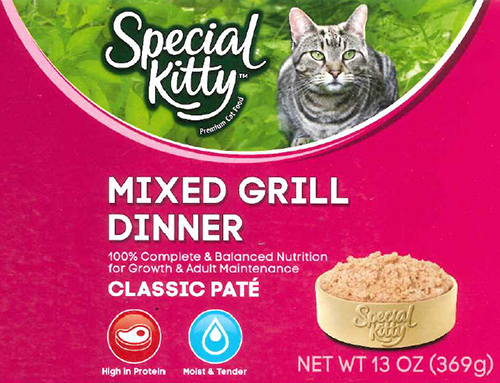Bad doggie breath? Consider introducing a water additive to your dog's dental hygiene routine.
Does your dog have bad breath? Most pet owners experience it with their dog at some point in time. Dental hygiene is important for a healthy, happy life and bad breath might be a sign of the opposite. Sure, it’s hard to brush your dog’s teeth as often as you do when they are less than willing to sit still for it. That’s why adding a liquid water additive to your dog’s water bowl with each refill is a small measure you can introduce to a daily routine without complete disruption.
What causes bad breath in dogs and cats?
Tartar (or plaque) is the result of bacteria build up on the surface of your dog’s teeth and mouth. The more plaque build up, the more pungent the breath. By brushing the teeth, the more bacteria is removed from your dog’s teeth and mouth, thus lessening plaque build up.
How does a water additive work?
One word: Enzymes.
How Oratene works:
A combination of Mutanase + Dextranase enzymes that affect different glucan bonds in plaque biofilm. Together, they effectively inhibit and reduce plaque formation. By combining these enzymes with our antibacterial enzymes, a comprehensive oral care system is created. This flavorless concentrate is added daily to drinking water to provide the safest, healthiest way to conveniently keep teeth clean without brushing. Does not contain chlorhexidine, chlorine or alcohol. Removes plaque while inhibiting odor causing microbes. Convenient pump for accurate dosages. Enough for 60 days of water for average size dog. Safe for daily ingestion; cannot overdose. Improves oral health and is pH neutral.
Purchase online: Zymox Oratene by Biotene
How SynergyLabs Dental Fresh works:
Dental Fresh Original Formula for Dogs is the “world’s first and only clinically proven toothbrush in a bottle.” Adding Dental Fresh to your dog's water bowl daily equates to brushing their teeth every time they drink water. This self-regulating formula attacks bacteria in the mouth and in the water bowl, thus eliminating "slime" left behind in the bottom of the bowl. Dental Fresh has no taste or odor, so it does not disrupt your pet's drinking habits. Between visits to the veterinarian, pets should be given Dental Fresh every day to promote proper oral health and hygiene. Add one teaspoon of Dental Fresh for every 8oz of water in a bowl, or follow your veterinarian's directions. Safe and beneficial for everyday use for both dogs and cats, too!
Purchase online: SynergyLabs Dental Fresh
Signs your dog may have greater dental issues:
Bad breath – caused by bacteria build-up, which can lead to dental disease.
Yellow or brown teeth.
Swollen, inflamed, red, and/or puffy gums.
Weight loss. Poor appetite.
If your pet has one or more of these issues, please make an appointment with your vet. Keep in mind that water additives are just one small measure to take in preventive dental health care for your pet. Routine at-home brushing, treats, and dental cleanings with your vet are all part of the overall prevention plan.
Periodontal Disease and Treatment: Dental Scaling
According to the American Veterinary Dental Society (AVDS), Periodontal disease is the most common clinical disease seen in adult dogs and cats. At three years or older, dogs and cats begin to exhibit signs of periodontal disease. It is completely preventable and reversible in many cases, however, the more severe cases can only prevent further damage with the appropriate tailor-made treatments. In order to effectively prevent, treat, or slow down the destructive effects of periodontal disease, veterinarians need to ensure they are performing the most crucial step of dental scaling: subgingival curettage.
The impact of periodontal disease
Periodontal disease refers to gingival inflammation induced by the bacteria found in plaque and encompasses both gingivitis and periodontitis. Gingivitis refers to inflammation that extends only to the gingiva and not the surrounding periodontal structures. If treated, gingivitis is reversible. If untreated, it may lead to periodontitis as plaque migrates and calculus accumulates under the gingival margin. The proportion of anaerobic bacteria increases in subgingival plaque and triggers an inflammatory response that then destroys surrounding tissues, such as periodontal ligaments and alveolar bone. Destruction of these supportive tissues is permanent.
Periodontitis can have both local and systemic ramifications. Local manifestations include oral pain, periodontal abscesses, oronasal fistulas, osteomyelitis, and pathologic fractures. [include photos] Systemically, periodontal disease can lead to morphologic changes in the kidneys, heart, and liver.
Treatment of periodontal disease
The treatment for periodontal disease is a professional dental cleaning under general anesthesia and home care maintenance. Together, these methods help to remove plaque that triggers the inflammation responsible for damaging tissue.
Homecare
To remove superficial plaque, home care such as teeth brushing and antiseptic applications are great routine practices.
Vet care
Professional cleanings done by your vet removes mineralized plaque in the form of tartar and calculus from both below and above the gum line. The treatment of gingivitis is aimed at restoring the health of the gingiva and preventing the onset of periodontitis. Treatment of patients with periodontitis aims to prevent localized disease progression and the spread of disease to other teeth.
Periodontal probing
Before a dental cleaning, your vet will perform an oral exam. During this exam, a periodontal probe is used to measure the subgingival pockets. The probe is rounded with a blunt tip that has graduated markings that are gradually inserted at each point in the gingival sulcus. Patients with gingivitis have normal periodontal sulcus depths. However, patients with periodontitis have deeper probing depths than what is typical. The pathogenic periodontal pockets are a result after inflammation progressively destroys the periodontal ligament and causes the epithelial attachment to migrate toward the root’s apex. Vertical alveolar bone loss can also increase periodontal pocket depth.
Subgingival curettage
An integral step to the treatment of periodontal disease is the removal of plaque and calculus above and below the gingival margin. Once the subgingival surface remains free of plaque and debris, the sulcular epithelium can reattach to the tooth root. A failure to remove subgingival calculus will prevent reattachment and allow periodontitis to progress.
According to the American Veterinary Dental Society:
“The most critical part of a dental scaling procedure is scaling the tooth surfaces that are within the gingival pocket … where periodontal disease is active.”
Latest in Preventative Dental Health for Dogs
For the month of February we are advocating strongly for dental health awareness for National Pet Dental Health month. To kick off the month, we are offering goodie bags full of a variety of preventative treat options with each dental cleaning done in the month of February. Included in the goodie bag is a new product on our shelves: Prescription Diet Dental Care Chews from Hills.
+++++++
Clinically proven to reduce plaque buildup in as little as 4 days.
+++++++
Clinically proven to maintain gingival health.
+++++++
Superior clinical efficacy in reducing plaque, tartar, stain buildup and occurrence of gingivitis.
+++++++
Let's put the treat back in treatment.
+++++++
Clinical Evidence Report
Feeding a single Hill's Prescription Diet Dental Care Chew per day resulted in:
Being awarded the VOHC Seal in the plaque and tartar categories.
Clinically proven reduction in plaque and tartar build-up in 28 days.
Up to 2.5 times more effective than other dental treats on the market.
Products Studied:
Prescription Diet Dental Care Chews (sold at River Landings Animal Clinic; just ask the receiptionists!)
Study Design
VOHC Seal Studies
Three randomized, crossover studies were conducted to evaluate the efficacy of the Prescription Diet Dental Care Chews in reducing the accumulation of plaque and tartar in a clean mouth model. Each study consisted of two 28 day treatment periods, separated by a 14 day wash-out period. A commercially available dry dog food which met AAFCO nutritional requirements for maintenance of adult dogs was selected as the control food. One small dental chew was fed in two independent studies to dogs weighing 10 kilograms or less while one regular dental chew was fed to dogs weighing over 10 kilograms. A minimum of twenty-eight dogs were enrolled in each study.
Results were quantified by the VOHC whole tooth methodology.
Study Design
Gingival Contour Plaque Index (GCPI) Competitor Study
An additional study was performed utilizing 20 dogs in a crossover design. The Gingival Contour Plaque Index GCPI methodology looks at plaque accumulation at the gingival margin where it is most critical for oral health. GCPI was used to assess plaque reduction achieved with once daily Prescription Diet Dental Care Chews (regular sized) compared to Greenies Dental Care Chews, Pedigree Dentastix, and Milkbone Brushing Chews also fed once per day. Following 4 days of feeding in each crossover period the outcomes were evaluated by the GCPI methodology.
Conclusions
Prescription Diet Dental Care Chews when fed as 1 treat per day to the appropriate size dog were clinically proven to significantly reduce plaque and tartar.
Prescription Diet Dental Care Chews have met the VOHC testing standard and been awarded the VOHC Seal in the Plaque and Tartar categories.
Prescription Diet Dental Care Chews are up to 2.5 times better at reducing plaque than other dental treats on the market.
References: Scherl DS, Bork K, Coffman L, Lowry SR, VanCleave M. Application of the gingival contour plaque index: six-month plaque and gingivitis study. J Vet Dent. 2009 Spring:26 (1):23-7.
Latest in Animal Food Recalls
The J.M. Smucker Company announced a limited voluntary recall on certain lots of 9LivesTM, EverPetTM, and Special KittyTM canned cat food due to possible low levels of thiamine (Vitamin B1).
The issue was discovered by the Quality Assurance team during review of production records at the manufacturing facility. No illnesses related to this issue have been reported to date and the product is being recalled out of an abundance of caution.
Cats fed diets low in thiamine for several weeks may be at risk for developing a thiamine deficiency. Thiamine is essential for cats. Symptoms of deficiency displayed by an affected cat can be gastrointestinal or neurological in nature. Early signs of thiamine deficiency may include decreased appetite, salivation, vomiting, and weight loss. In advanced cases, neurological signs can develop, which include ventroflexion (bending towards the floor) of the neck, wobbly walking, circling, falling, and seizures. Contact your veterinarian immediately if your cat is displaying any of these symptoms. If treated promptly, thiamine deficiency is typically reversible.
The affected product was distributed to a limited number of retail customers from December 20 through January 3, 2017.
The affected production includes the following:
| Brand | Product Description | UPC Code Consumer Unit | Lot Numbers | Units per Case | Selling Unit Size | UPC Code on Case |
|---|---|---|---|---|---|---|
| 9Lives | Meaty Pate Chicken and Tuna | 7910052238 | 6354803 | 12 | 13 oz | 7910052228 |
| 9Lives | Meaty Pate Seafood Platter | 7910000402 | 6356803 | 24 | 5.5 oz | 7910000402 |
| 9Lives | Meaty Pate Seafood Platter | 7910000367 | 6355803 | 6 | 4pk / 5.5 oz each | 7910003670 |
| 9Lives | Meaty Pate Super Supper | 7910000327 | 6358803 | 24 | 5.5 oz | 7910000327 |
| 9Lives | Meaty Pate Super Supper | 7910000286 | 6358803 | 6 | 4pk / 5.5 oz each | 7910002860 |
| 9Lives | Meaty Pate Super Supper | 7910052239 | 6355803 | 12 | 13 oz | 7910052229 |
| 9Lives | Meaty Pate Super Supper | 7910052239 | 6364803 | 12 | 13 oz | 7910052229 |
| 9Lives | Meaty Pate with Chicken and Seafood | 7910000364 (793641) | 6356803 | 6 | 4pk / 5.5 oz each | 7910003640 |
| 9Lives | Meaty Pate with Chicken and Tuna | 7910000324 | 6356803 | 24 | 5.5 oz | 7910000324 |
| 9Lives | Meaty Pate with Chicken Dinner | 7910000410 | 6356803 | 24 | 5.5 oz | 7910000410 |
| 9Lives | Meaty Pate with Liver and Chicken | 7910000312 (793121) | 6355803 | 6 | 4pk / 5.5 oz each | 7910000312 |
| 9Lives | Meaty Pate with Ocean Whitefish | 7910000420 | 6358803 | 24 | 5.5 oz | 7910000420 |
| 9Lives | Seafood Poultry Variety Pack | 7910053377 | 6307803 | 24 | 5.5 oz | 7910053377 |
| 9Lives | Meaty Pate with Chicken & Tuna | 7910000366 | 6357803 | 6 | 4pk / 5.5 oz each | 7910003660 |
| EverPet | Mixed Grill Dinner | 7910053114 | 6356803 | 12 | 13 oz | 7910053114 |
| Special Kitty | Beef and Liver Dinner | 8113112120 | 6355803 | 12 | 13 oz | 8113112120 |
| Special Kitty | Classic Tuna Dinner | 8113112157 | 6358803 | 12 | 13 oz | 8113112157 |
| Special Kitty | Mixed Grill Dinner with printed wrap | 8113109609 | 6355803 | 1 | 12 pk / 13 oz each | 8113109609 |
| Special Kitty | Mixed Grill Dinner without printed wrap | 8113112119 | 6356803 | 12 | 13 oz | 8113112119 |
| Special Kitty | Super Supper | 8113179041 | 6355803 | 12 | 13 oz | 7910079041 |
No other products of The J.M. Smucker Company are affected by this recall.
Consumers who have cans of cat food from the impacted lots should stop feeding it to their cats and dial phone number 1-800-828-9980 Monday through Friday 9:00 AM - 6:00 PM EST or contact the company at consumer.relations@jmsmucker.com.
The recall is being conducted in cooperation with the U.S. Food and Drug Administration (FDA).











